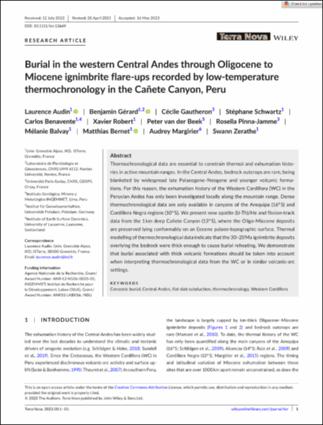Please use this identifier to cite or link to this item:
https://hdl.handle.net/20.500.12544/4626Files in This Item:
| File | Description | Size | Format | |
|---|---|---|---|---|
| Audin-2023-Burial_in_the_western_Central_Andes.pdf | Artículo | 3.47 MB | Adobe PDF | View/Open |
This item is licensed under a Creative Commons License












